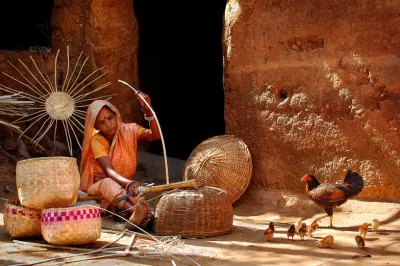India Digitizes its Merchants in Partnership with the U.S.
In September 2014, when Prime Minister Modi was the U.S. President’s guest of honor at a working dinner, what gripped President Obama and the attendees, colleagues tell us, was Modi’s passion for financial inclusion. That exchange between the two leaders resulted in an ambitious partnership between the two governments focused on furthering the financial inclusion revolution started by Jan-Dhan Yojana, the Prime Minister's ambitious plan to ensure affordable financial services.
Since the fall of 2014, there have been several high-level statements from both President Obama and PM Modi indicating a renewed US-India relationship. The two countries are collaborating on a variety of issues, and financial inclusion is a priority among them. This particular partnership, which is expected to be signed by the Indian government very soon, focuses on both commercial and policy solutions to spur India’s nearly 10 million merchants to accept electronic payments.
The focus on digitizing merchant payments is an important part of taking financial inclusion beyond account opening. It establishes a foundation upon which the poor can more fully participate in India’s economy. Jan-Dhan Yojana, PM Modi’s campaign to ensure access to financial services, has been successful at opening accounts and through the issuance of Rupay cards has given people the ability to transact electronically.
What people need now is a reason to transact with the new digital tools they are receiving, especially for everyday purchases at corner stores. While many millions of Indians are getting access to an electronic transaction account for the first time, it is estimated that fewer than six percent of merchants accept digital payments. Without closing that critical loop on transactions, there is a risk that Jan-Dhan Yojana could become no more than a wide-reaching disbursal mechanism for government payments – a success for government payments but a missed opportunity to spur widespread digital transactions.

Photo Credit: Jeanette Thomas
India is already exploring ways to incentivize merchants to accept electronic payments. Finance Minister Jaitely mentioned in his February speech that the government is exploring ways to push digital transactions and made similar remarks recently. These efforts are part of India’s “less cash” initiative.
The U.S.-India partnership shores up these efforts and recognizes that digitizing transactions at small last-mile merchants requires collective action – a combination of targeted policy interventions and ambitious commercial steps. In fact, the strength of this partnership are the over twenty companies, some of the most prominent FMCG (fast-moving consumer goods) and retail players in India, organizing under one roof and one commitment to digitize their retail networks to the last mile. The U.S. team and its Indian partners worked to get these commitments in place over the last few months.
Most of those companies had gathered at a pre-launch event a couple of weeks ago. The all-day workshop was kicked off by a statement by Joint Secretary Rajesh Aggarwal, who along with Dr. Alok Pande, in the Department of Financial Services has been driving Jan-Dhan Yojana at the Ministry of Finance. Conversations between partners involved arguably some of the most basic questions which still remain unanswered in India:
- What will convince merchants (particularly those serving poorer consumers) to accept digital payments? A number of efforts globally are showing that merchants, especially those dealing in small value transactions, are more likely to adopt electronic payments if they get value added services such tools to better understand their customers, better manage their inventory, or gain access to credit through digital footprints.
- What business and revenue models will work best? There are different pricing options to facilitate low-value merchant payments. The cost of the transaction could be borne by merchants alone, shared between different actors in the process, borne by customers alone or could be free, with revenues from other services.
- Will certain merchants accept digital payments sooner than others? Factors such as size, location, use of technology, type and volume of transactions are likely to influence which merchant segments adopt digital payments sooner. Each corporate actor in their partnership has their own segmentation of merchants in their retail chains.
- What will it take to increase consumer usage of digital payments? Incentives the partnership might pursue could include discounts, loyalty rewards, and rebates. The partnership will segment lower income consumers to identify who are more likely to transact more frequently.
- Which technology solutions provide the best economics for scale? The partnership provides an opportunity for India to leapfrog more traditional payment technologies. One of the options the partnership is likely to consider is how to leverage the growing mobile phone coverage in India.
A number of these options are going to be tested under the partnership over the next few months, along with policy levers the government is considering. Perhaps most striking at the workshop was the level of ambition expressed by members of the partnership. Rather than seeking an incremental move toward digital, the discussion centered on ways to create a more fundamental paradigm shift to an entirely digital payments ecosystem. Importantly, these ambitions are motivated by core business interests suggesting the partnership may have a real ability to accomplish something big.
To be sure, it’s an ambitious agenda. But the partnership, its collection of commercial actors, its emphasis on both targeted policy interventions and business solutions, and its timeliness, building on the progress of the Jan-Dhan Yojana, provide the best shot at major movement towards digitizing merchant payments. Whatever progress is made, hopefully Mr. Modi and Mr. Obama will have a lot more to talk about whenever they meet again.




Add new comment